Destinations & Things To Do
5 Outdoor Spaces Scientifically Proven to Calm You Down
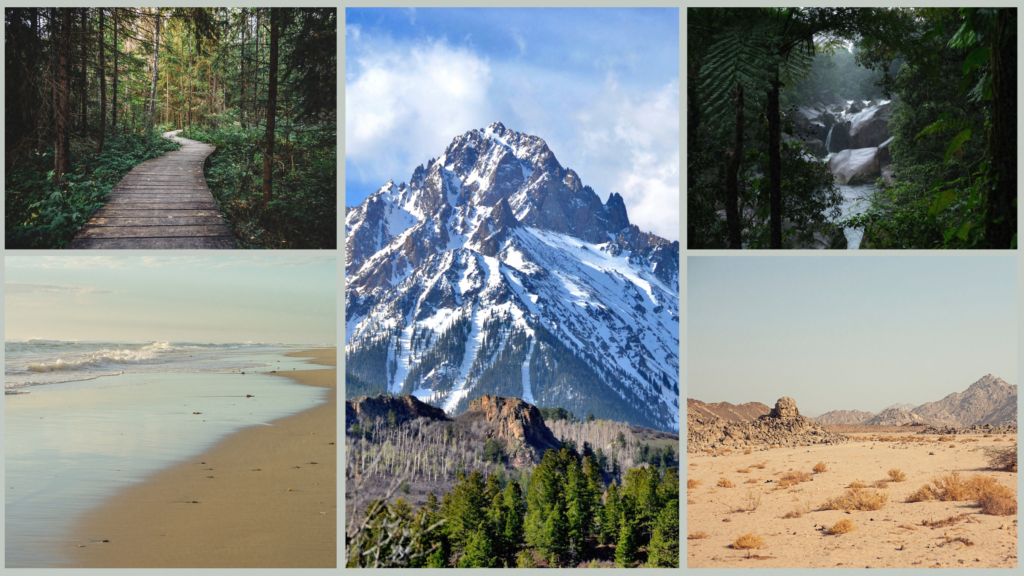
Have you ever wondered why your mind suddenly feels unburdened in the presence of trees? Or why the ocean so effortlessly lulls you into a meditative state? Outdoor spaces are scientifically proven to soothe the nervous system—and quickly.
Think about it: Forests ground you. Mountains lift you. Water opens you. Jungles awaken you. Even sitting in a park beneath a tree restores you.
Still, despite these truths, we exist in an era of indoor living. The average American spends approximately 90 percent of their time indoors, and we’re increasingly glued to screens that consume hours of our valuable time and are known to induce stress reactions and deplete mental reserves.
Whether it’s the rhythmic pull of the tide, the stillness of a desert plain, or the sensory abundance of a rainforest, each natural environment speaks a different language and affects us in distinct ways—reducing our heart rate, shifting our mood, and returning us to a more balanced state.
Natural environments, on the other hand, have been found to activate the parasympathetic nervous system, helping us feel calm while offering a physiological reset—and it turns out that different landscapes positively impact well-being in various ways.
Any Kind of Green Space Is Beneficial
But don’t worry, urbanites. You don’t need to leave the city to feel the effects of nature. According to Lindsay McCunn, a professor of Psychology at Vancouver Island University and co-editor-in-chief of the Journal of Environmental Psychology, any experience of nature, not just its size or scale, is beneficial.
“Environmental psychology research shows that green spaces on a smaller scale, such as a tree-lined street, a neighborhood park, or a rooftop garden, can yield restorative benefits,” says McCunn. “They also play a critical role in social health, with access to green space being linked to stronger community ties, lower rates of depression, and greater resilience.”
McCunn adds that even simulated nature, depicted in things like artwork, photos, and video footage, can provide modest benefits. Still, if you can access wilder parts of the world, soaking it up in person is advisable. Whether it’s the rhythmic pull of the tide, the stillness of a desert plain, or the sensory abundance of a rainforest, each natural environment speaks a different language and affects us in distinct ways—reducing our heart rate, shifting our mood, and returning us to a more balanced state.
5 Outdoor Spaces That Calm You Down (and Why)
From lush forests to awe-inspiring mountains, these outdoor spaces naturally encourage humans to unwind.
1. Forests
Forest bathing, according to one study, can boost immunity and provide the body with a hormonal reset. After just two days in a forest, participants showed a 50 percent increase in natural killer cell activity—a key part of immune defense—as well as a reduction in stress hormones.
“Dappled light, the scent of soil, the rustle of leaves—all of these elements engage what psychologists call ‘soft fascination,’ gently holding our attention without overstimulating it,” says neuroscientist and certified nature and forest therapy guide Karina Del Punta.
This mental pause allows our prefrontal cortex (the part of the brain responsible for planning and decision-making) to rest, reducing mental fatigue and supporting emotional regulation, says Del Punta. She explains that from an evolutionary perspective, forests offered our ancestors food, shelter, and safety, so it makes sense that our bodies still respond with a sense of ease under the forest’s tree canopy.
“Green spaces play a key role in supporting our psychological, physiological, and social well-being,” says McCunn. McCunn highlights how the multisensory aspects of nature, such as the sounds of birds, as well as the visual complexity and fractal, or repeating, patterns of vegetation, can minimize cognitive load and aid in mindfulness.
2. Oceans, Lakes, and Rivers
The ocean has a way of calming even the most restless of minds, inviting you to think a little less, breathe a little more slowly, and release what’s weighing on you. “Blue mind” is the term coined by the late marine biologist Wallace J. Nichols to describe the semi-meditative state induced by being in or near water.
Del Punta describes it as a gentle, open awareness marked by creativity, emotional release, and calm. “At a symbolic level, water mirrors our emotional landscape—constantly shifting, flowing, and offering space for release and renewal,” says Del Punta. “Being near it often feels like being closer to our own depths. Even just looking at water can lower heart rate and blood pressure, activating the parasympathetic nervous system, which governs rest and digestion.”
A mere two minutes of watching water has been shown to result in relaxation. One study on the psychological response to water sounds found that, within just one minute of listening to spring water sounds, participants’ negative emotions decreased by about 67 percent, and restorative well-being scores nearly doubled.
The sight and sound of moving water in “blue” environments, such as coastlines, rivers, and lakes, provide the same soft fascination experienced in green spaces, allowing the mind to wander and recover from cognitive fatigue without being overstimulated, explains McCunn.
A mere two minutes of watching water has been shown to result in relaxation.
McCunn stresses that it’s important to remember that personal and cultural associations play a role in how individuals respond to water in an environment. “For some, water can evoke positive memories or connections that may augment water’s mood-regulating effects,” she says. “However, for others, water may also evoke unpleasant thoughts or worries, based on prior experiences.”
3. Mountains
Occupying roughly a quarter of our planet and featuring summits that reach staggering heights, mountain ranges never cease to stop us in our tracks and take our breath away, a response known as “awe.” Research shows this powerful state of mindfulness can dampen the body’s stress response and change how we process information.
It also shatters expectations and quiets the ego, according to Del Punta. “Mountain environments expand our view, literally and metaphorically, and the wide-open perspective resets mental clutter and can recalibrate our sense of purpose and scale,” she says.
One field study compared hikers at a mountain summit with those at the bottom and found that summit hikers not only had significantly greater feelings of awe but also an increased perception of time abundance, higher openness to learning, and greater experiential creativity.
Beyond its psychological benefits, time spent at higher altitudes also prompts physiological adaptations, such as improved oxygen regulation, circulation, endurance, and resilience, according to Del Punta. She adds that evolutionarily, vantage points gave our ancestors a survival edge. “Psychologically, they offer us clarity and orientation,” she says. They also reconnect us to something larger—vast, ancient, and enduring. “In their presence, we remember how small we are, and strangely, how whole,” says Del Punta.
4. Desert
Many people would consider desert landscapes harsh, lifeless, and unwelcoming. But Del Punta notes that sparseness can be a balm for busy minds.
“With their sparse terrain and vast silence, deserts strip everything down to essence, offering an environment nearly free of distraction,” says Del Punta. This reduction in sensory input can promote deep introspection and emotional clarity. Deserts also amplify interoception—our ability to sense and interpret inner bodily signals—and invite stillness and reflection.
In her book Return to Nature: The New Science of How Natural Landscapes Restore Us, author Emma Loewe discusses how the expansive desert horizon inspires creative problem solving and gives way to spacious ideas. Loewe points to research, noting that when people attempt to solve problems, their eyes naturally gravitate to blank spaces, a visual tick to minimize outward distraction.
In comparing urban, green, and desert (aka “brown”) environments, desert walks were found to deliver stress reduction and comfort levels equivalent to green space walks.
5. Rainforest
In stark contrast to the minimalism of the desert, rainforests are bursting with life. These biologically rich environments flood the senses in sound, color, movement, and scent.
“This sensory abundance stimulates the brain, awakening curiosity, presence, and emotional vibrancy,” says Del Punta. “In an environment that pulses with life, we’re reminded of our own aliveness—untamed, embodied, and deeply connected to the wild world.”
Exposure to these complex ecosystems supports mental well-being and has been associated with higher psychological resilience and greater emotional engagement.
Jane Goodall famously referred to rainforests as her “temple.” For her, the power of the landscapes is best understood by spending time within them. “For those who have experienced the joy of being alone with nature, there is really little need for me to say much more,” she reportedly said. “For those who have not, no words of mine can ever describe the powerful, almost mystical knowledge of beauty and eternity that come, suddenly, and all unexpected.”
Want more Outside health stories? Sign up for the Bodywork newsletter.
Destinations & Things To Do
Day 9 – 22.2 miles – July 17th
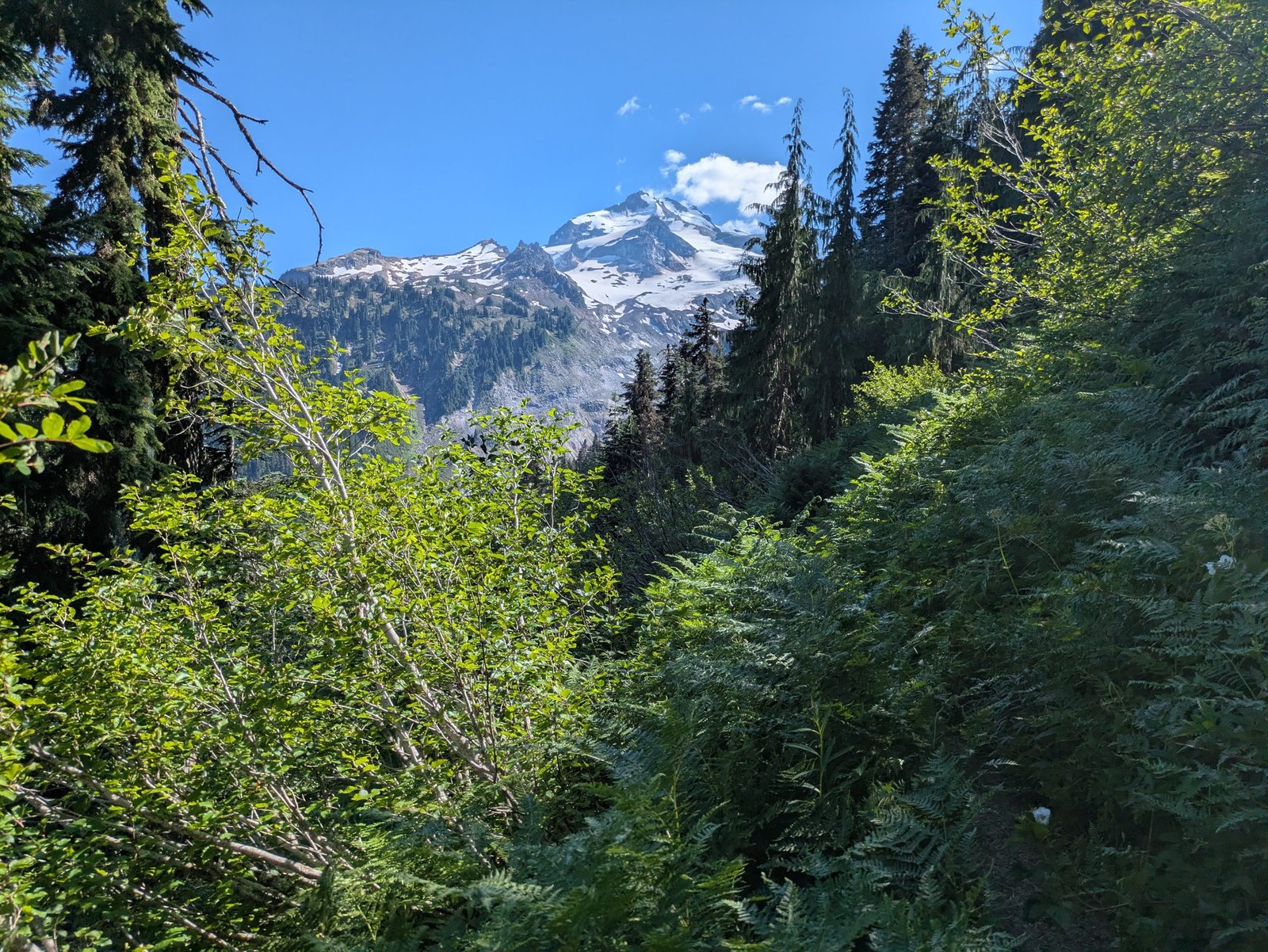
Start: mile 100.2
End: mile 122.4
Total: 22.2 mi
Ascent: 4432′
Descent: 4485′
I woke up to people talking around 5:30am, but fell back asleep for a while, and then got up at about 6:15am.
I packed up, again I don’t cook in the morning just eat a bar or pop tart once I start walking, so it’s quick. This was the first campsite I stayed at with a toilet, so I used that, honestly kind of luxury. Then I started hiking at 7am!
Emma started a bit before me and John a bit after me, but I stayed around and between them almost all day long, and we stopped for lunch together at Dolly Creek at mile 112.6 around noon. It was a really nice creek, flowing fast and the water was cool and felt great.
At this point my hunger cues seemed to be kind of coming back, which was nice, so I ate a good amount for lunch.
This whole day we also had a ton of blowdowns (trees laying across the trail, sometimes one sometimes a whole mess of them) and some bushwhacking, which slowed us down a little bit. Sometimes we would have to just jump over and sometimes we’d have to go up and around 50 feet or so off trail.
We kept hiking and got to mile 122.4, where we found a campsite not marked in the map, but recommended to Emma by a hiker who had done this section. It was decently with the few hundred foot walk down from the trail, with nice flat spots to pitch our tents and an amazing river right near to wash up in and get water from.
We sat by the water to eat our dinner, I had ramen, as the valley slowly turned shaded as the sun lowered behind the mountains. The spot I had for my tent was actually a little sloped, but It thought it might help with the congestion that I was feeling.
When in Stehekin I started to have congestion and a cough, which persisted, I didn’t feel awful just annoyed with it. Another plus for this campsite was that there were basically no bugs! No mosquitoes and only a few flies, which was definitely not the case the night before.
Because of the long days so far there was only 66.1 miles to Stevens Pass from here! But the hardest part was yet to come…
See you in the next one!
This website contains affiliate links, which means The Trek may receive a percentage of any product or service you purchase using the links in the articles or advertisements. The buyer pays the same price as they would otherwise, and your purchase helps to support The Trek’s ongoing goal to serve you quality backpacking advice and information. Thanks for your support!
To learn more, please visit the About This Site page.
Destinations & Things To Do
Magic on the PCT Days 67-69
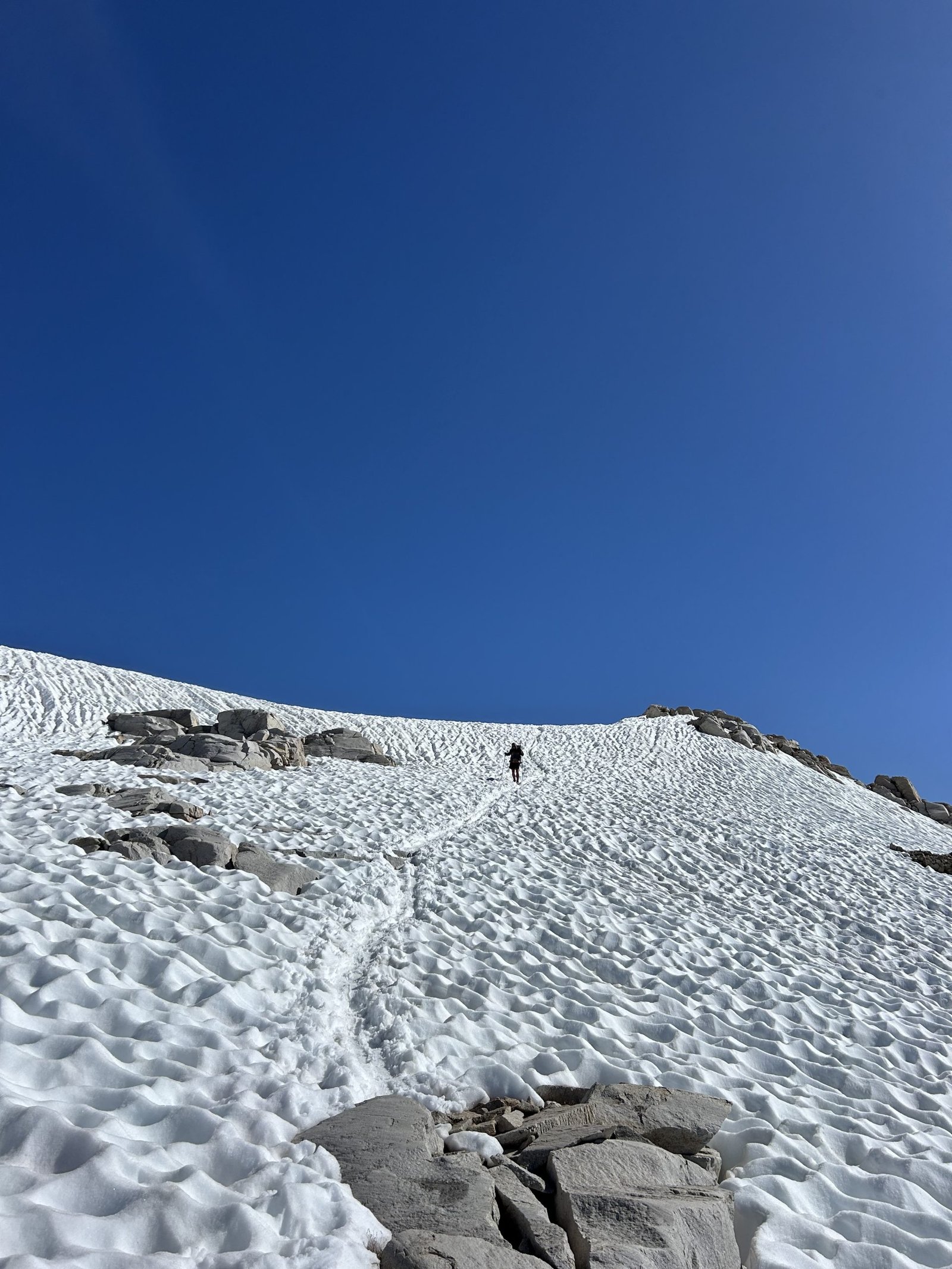
*these posts are coming straight from trail, I apologize in advance for typos!*
Location: High Sierra
Start: Vermilion Valley Resort – 879.9
End: Tentsite – 889.7
Miles: 9.8
Ascent: 4165 | Descent: 2649
Sleep: Tent
What a great day! We woke up around 6:30am at VVR to pack up the tent before breakfast. The resort served breakfast from 7-9:30am and we wanted to be some of the first in line. When we got inside to order there was already a line, but it gave us a chance to peruse the resupply options. We had looked at our food last night and determined that we had enough to get us into Mammoth in 2 days so we didn’t need to buy anything from VVR. We ended up purchasing a couple of Rice Crispy Treats and some Oreos for extra snacks just in case.
When we finally got to the counter to order I got the limber jack platter and Truffles got a breakfast burrito. We both ordered unlimited coffee as well. We knew our bill would be pricey since everything at VVR was expensive, but our total after tip and tax was $150. Considering all we ate for dinner and breakfast plus free camping and bathrooms/water, I think we did pretty good. We definitely saved by not taking the $20 ferry across the lake, and I was pleased by everything at VVR.
We sat outside in the porch to wait and sip on coffee. I am so grateful I got a new battery bank at KMS because my new battery charged from dead to 100% in the time we ate breakfast. When our names were finally called to get our food I was shocked by the amount that came with my order. The lumberjack platter consisted of 2 humongous pancakes that cook up an entire plate, a large side of hashbrowns, a hearty helping of scrambled eggs, sausage links, bacon, ham, and 2 pieces of toast. Even with my hiker hunger there was no way I could eat all that food! Truffles’ breakfast burrito was good but he still had room to try and help me finish all my food.
We sat with Cheesehead and Andrew and talked about our Sierra experiences and what our plans for the next sections are. When we were finished we slowly began to pack up and tried to get excited to hike out. We ended up leaving VVR around 9:30am and headed to the blue blaze to connect us back to the PCT. Yesterday we came down the Bear Ridge Trail and to get to VVR, but today we took another trail around the lake to get us back on trail.
The side trail was about 7 miles long and took us through pine forests and over rocks overlooking the lake. We had a little bit of climbing that wouldn’t have been bad expect for the fact that I was stuffed from breakfast. We were both moving slow and I thought I was going to throw up about half of the time. When I finally made it to the PCT junction I sat down to wait for Truffles and that helped to settle my stomach.
Once we were on the PCT again we had a 6 mile climb to the top of Silver Pass. According to a FarOut comment, Silver Pass is the last pass of the High Sierra! The climb was steep in sections but overall wasn’t too bad. It just felt like it took a long time and like we were moving slowly since it was afternoon when we started the ascent. In reality we were moving just fine and ended up getting up and over before 5pm. Some of the steep sections of the trail took us directly through streams and even a waterfall, so our feet were soaked and we were huffing and puffing the whole way.
We stopped to filter water by a meadow and thankfully after this point the steepness of the trail slackened off. We were able to continue climbing without gasping for breath. We crossed over rocky plateaus and finally got a good view of the pass and the mountains beyond. There was minimal snow so it made for easy hiking. We made it to the top of the pass around 4:30pm and had a final climb to the “high point” before beginning the descent.
We weren’t sure what to expect coming down the mountain, but the snow was very manageable and we were able to travel over the boot prints rather than post holing. We even got several opportunities to glissade! We were through the snow in less than a mile and weee able to cruise downhill. We had our sites set on a campsite 3ish miles from the pass, so we moseyed our way down trail.
As soon as we arrived at the Tentsite we were immediately swarmed by mosquitoes. We got the tent up as fast as we could and jumped inside. We decided to cook inside the tent in the safety of the bug net rather than being eaten alive outside. Thankfully we were careful and neither of us spilled anything inside the tent. I’ve cooked in my vestibule when it’s been raining before, but this was the first time actually sitting fully in the tent. After dinner we laid out our sleeping stuff and got ready for bed. Because of the blue blaze we hiked 16.4 total miles today.
We were able to get signal yesterday to call Hangman and get an update from him. After he and Pinky went back into Bishop on day 62, they were able to get him an xray to confirm that he does indeed have a stress fracture. We all have family coming to visit later this week, so they decided to just bop around in the meantime and then fly home with family. When we talked to him yesterday they had rented a car and we made plans for them to pick us up tomorrow from the Horseshoe Lake trailhead and take us into Mammoth for a few days before driving all of us to South Lake Tahoe to meet our family. I’m so looking forward to a few days off trial and to see family and rest!
Location: High Sierra
Start: Tentsite – 889.7
End: Mammoth Pass (Mammoth Lakes) – 904.4
Miles: 14.7
Ascent: 2501 | Descent: 2777
Sleep: Tent
Town day! Truffles and I were up and on trail around 6:30am eager to hike hard to be picked up and head into Mammoth Lakes. The trail in the morning was cruisey and we hiked along side the river and through meadows before our big climb for the day. Numerous switchbacks had us climbing up and up. We saw a family of deer as we climbed, and before long the trail flattened out and we were at the top.
We passed by Lake Virginia where the trail abruptly ended and we had to slog through the water to reach the trail on the other side. I don’t think my feet will ever be fully dry in the Sierra, but at least the rest of my body isn’t soaked like on the AT.
We hiked along the ridge line for a while before a long descent down to Purple Lake. Truffles had to dig a cat hole and we made plans to meet in a couple miles at Duck Lake. I hiked alone for a while until I passed another solo woman and we struck up a conversation. Her name was Scales and she was from Australia. We hiked together for the next several hours and I was so engrossed in conversation with her that I completely missed Duck Lake.
Scales and I hiked hard for several miles, only stopping when we were both out of water and we crossed a creek. I stopped to filter water and Truffles caught up. He was pretty aggravated that I missed our rendezvous spot at Duck Lake, so he filtered water and quickly left me in the dust. We were both heading to the same trailhead, so I let him go and knew I’d see him after while.
After filter water at the creek it was only 2 more miles in the PCT before we’d head down Mammoth Pass/Horseshoe Lake Trail down to the trailhead. They were easy miles and before I knew it I was at the junction. I was so in the zone I didn’t even see the 900 mile marker… bummer! Going down to Horseshoe Lake Trail was mostly smooth with a few ups and downs. I had expected it to be all downhill so the ups took me by surprise and I felt like I was moving slowly. I kept meeting hikers coming the opposite way, all of whom said they’d been in Mammoth and told me to have a great time in town.
As I neared McLeod Lake I began to see more and more day hikers. The trail quickly got crowded and I felt like I was playing Frogger the way I was having to doge people. It was all downhill so I was able to move fast, plus I was motivated by the potential for town food. I flew down the trail and tried to politely ask everyone in my way to let me pass.
Finally I made it down to Horseshoe Lake and was greeted in the parking lot by Truffles, Pinky, Hangman, and Pimento in a rental car. The 3 of them had been in Bishop and rented a car to come pick us up. Pinky and Hangman had hiked out of Bishop with us on day 62, but Hangman’s foot pain became unbearable and they decided to go back down into Bishop so that he could get a xray. It was confirmed that he had a stress fracture, so they hung out in Bishop for a while waiting for Pimento to hike into town since he was behind us. Once they were all together they rented a car so that we could all explore for a while. We have family meeting all of us in South Lake Tahoe in a few days, so this way we can drive to see family and all still get to be together even if we aren’t hiking together.
The 5 of us (plus our packs and bear cans) all piled into the Nissan Altima, it was a tight squeeze to say the least. They caught us up on what they’d been doing for the past few days and told them about our time in the Sierra. Pinky drove us into the town of Mammoth Lakes where we made a beeline for Distant Brewing for drinks and food. We had beer and caught up over pizza before trying to make a rough plan for our few days before going to Tahoe to see family. We decided that we’d drive out to Yosemite to spend a couple of days and we all applied for the Half Dome permits.
We left the brewery and made a quick pit stop at an RV park so that Truffles and I could take showers since we just came off the trail. We still had to put on our stinky hiking clothes, but I felt a little cleaner and more presentable. We made a trip to the grocery outlet to get food for the next few days and were on our way.
We all decided to just camp on National Forest land rather than paying for a campsite or hotel room, so we drove out of town a few miles and found a sweet little campsite thanks to Pimento’s favorite “freecampsites.net” website. We set up our tents by the car and built a small fire to roast hotdogs. It felt just like being on trail besides the fact that we kept going to the car to get stuff. It reminded me a lot of Truffles, Pimento, and I’s big road trip after the AZT in 2023 when we basically did the same thing for a month. It felt good to have our group back together.
We had enough signal to check our emails and learn that we got Half Dome permits for Monday! That means we’d head to Yosemite tomorrow to explore and then get to do the iconic hike the following day. The day after that we’ll drive to South Lake Tahoe to meet up with our families. What a fun week we have planned and a great break from the trail.
Location: High Sierra
Start: Mammoth Pass (Mammoth Lakes) – 904.4
End: Mammoth Lakes – 904.4
Miles: 0.0
Sleep: Tent
The perfect start to a vacation from trail! We woke up in the national forest close to town and broke camp. It was pretty much the same deal as when we break camp on trail, but this time we had to figure out how to fit all of our crap back into the trunk of the car. We ended up with everything in the trunk except for a bag of groceries, 2 bear cans, and a case of beer. That stuff was spread between mine, Pimento, and Truffle’s laps in the backseat.
We made a quick pit stop at some pit toilets before getting in the highway and heading towards Yosemite. It was about an hour and a half drive to the eastern entrance of the park. When we arrived there were signs saying June 15th (today) was the first day they started doing reservations for entry, but we didn’t have reservations. We weren’t sure what to expect when we pulled up to the ranger station the entrance. We told her we didn’t have reservations but we had half dome permits for the following day. She said that would work and waved us on through. At the fee station I decided to go ahead and buy an America the Beautiful pass so that Truffles and I can hopefully go explore more national parks in the fall and next spring. That got us into the park!
All of the stuff that we wanted to do, though, was on the west side of the park in Yosemite Valley. That meant we had to drive nearly 2 hours through the park to get there. The drive was pretty and it went by quickly. We stopped where the PCT crossed the road near Tuloumne Meadows because we saw our friend Bubbles crossing the road. We pulled over and talked to him for a while, we hadn’t seen him since Tehachapi. It was good to catch up and then send him on his way, hopefully we’ll run into him somewhere up the trail.
We continued our drive and finally made it down into Yosemite Valley. Our first stop was at Bridal Veil Falls. Hangman is in a boot because of his stress fracture so he can’t walk far. This short paved trail was perfect to get us close to the waterfall and easy enough for him. It was overwhelming how many people there were and annoying to deal with the crowds. It was jarring to the system after only seeing a handful of people each day. We admired the falls for a bit before getting back into the car and heading to the visitor center.
If the water fall was crowded, I don’t even know how to describe the visitor center. It was overflowing with people and hard to even think because of all the noise and commotion. I think we all felt overwhelmed and unsure of what to do with ourselves. We decided to get food from the grill and were lucky enough to snag a table in the shade. We ate quickly and took turns checking out the store and the visitor center. Pimento talked to a volunteer about what we need to do for half dome tomorrow, and we made a rough plan for the next couple of days.
We left the visitor center and drove an hour south west to Mariposa Grove. We wanted to check out the giant sequoias and decided to camp just outside the park boundary on this side. We parked at the outpost and go in line for the shuttle to the grove. Again it was super crowded and they fit 70 people on to a bus. I was grateful to get off the cramped bus and be back in the fresh air, even if there were people still bumping into me on the trail.
We took a short hike up to see the Grizzly Giant and California Tunnel Tree. The giant sequoias live up to their name and are massive! The Grizzly Giant is even as tall as the Statue of Liberty according to one sign that we read. We walked back down to catch the bus and hoped back in the car to drive out of the park.
Again Pimento found a sweet campsite for us right outside of the park on National Forest land. We set up camp and it was so buggy that we had to eat in our tents. I watched countless mosquitos swarm our tent while cooking and was thankful to be *partially* inside. We’ve got a big day tomorrow and are going to get up early to head into the park. I’m nervous about half dome just because I’m scared of heights and hope i don’t freak out. I know this is a once in a lifetime hike so I really want to do it!
Destinations & Things To Do
First Look: Troxus E-Bikes
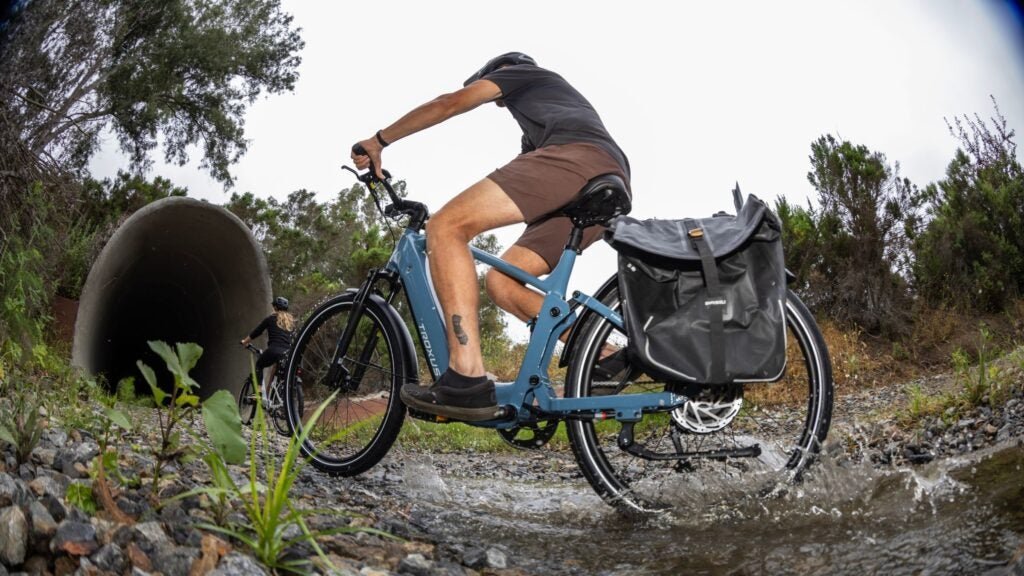
Just like the cyclists who use them, Troxus e-bikes are a diverse bunch. With more than ten models to choose from, the San Diego–based company offers a full range of e-bikes that have every rider—and every trip—covered. Whether you’re an adventure seeker, an everyday commuter, or the do-it-all type, Troxus has the right bike for you. Troxus also backs up the performance of its e-bikes with a five-year, 5,000-mile warranty, adding an unmatched level of security.
Trax Series
These urban-oriented e-bikes are perfect for cruising to work or exploring your city on the weekends. The Trax models are hyper efficient, with battery capacities and ranges that make them excellent eco-friendly alternatives to car travel. They’re also relatively light, so you can carry them to and from your house or on and off public transportation with ease.
If you’re looking for a classic commuter bike, it’s hard to beat the Trax Sport. It features a 500W+ peak power output motor and a minimalist aluminum build that packs in a ton of features, from an integrated color LCD display to Bluetooth. Switchable sensor modes allow you to effortlessly toggle between torque sensor mode (great for smooth handling and conserving battery) and cadence sensor mode (for when your legs could use a boost). And an optional range-extending 250Wh piggyback battery means you can jet to a weekend getaway without having to recharge.
The Trax Sport’s slightly burlier cousin, the Trax SUV, is also primed for city life. Like the Sport, it boasts switchable sensor technology, and the SUV adds a smooth-riding dual-suspension frame that will brush off the rougher side of urban riding. Internal cable routing makes for a handsome aesthetic.
Adventure Series
Troxus designed this ultracapable e-bike category for far-flung missions. The Adventure Series models will take you from paved roads to rugged terrain and back in style and comfort.
The Explorer Plus is built to handle on and off-road action with aplomb. It has a 960-watt motor and a range of up to 90 miles—perfect for head-clearing getaways—and can ratchet up the speed to 28 miles per hour. It features 26”x4” fat tires built for adventures as big as they are, letting you go wherever the road or trail leads. And a newer, brighter front LED headlight system ensures you can keep riding safely when the adventure goes past dark.
The T-Rex Plus is also an excellent choice for your next adventure companion. Its whopping 1000W peak power motor makes this model a monster on the trail. With a 110mm aluminium dual suspension frame paired with the SR® Suntour air shock, the T-Rex Plus offers a smooth ride on even the most rugged terrain. And with 26”x4.8” tires, you have bigger wheels for even bigger adventures.
Lynx Series
The Lynx Series is the versatile workhorse of the bunch. These bikes’ 20-inch wheels—ideal for quick acceleration and low, easy-to-use standover heights—perhaps belie the line’s do-it-all capability.
The Lynx 2-Up and Lynx T-Scram, for example, are built for a driver and a passenger and have a 360-pound (2-UP) and 400-pound (T-Scram). Their welded carrying racks make these bikes purpose-built for grabbing groceries, taking the kids to school, and generally smoothing the corners of any hectic errand runs. That doesn’t mean the Lynx models miss out on the fun: The bikes also feature the joy of switchable sensor tech, have a 720-watt battery, and can crank the speed up to 28 miles per hour, making them reliable adventure companions in their own right.
Customers Come First
Troxus also sets itself apart with a five-year, 5,000-mile warranty. And if your bike needs a repair, Troxus offers the Total Care+ program that collaborates with its network of more than 200 authorized retailers to swiftly repair accident-related damage, replace worn components, or address battery concerns.
Finally, all Troxus models from 2025 onward are UL-compliant, ensuring their batteries, chargers, and drivetrains adhere to strict safety standards. Just one more reason Troxus e-bikes are making a name for themselves in a crowded field.
Engineered for durability, crafted for capability, and designed for fun. Troxus e-bikes incorporate innovative features like switchable torque and cadence sensors that allow you to tune your ride as you ride, as well as an industry-leading five-year/5,000-mile “fender to fender” warranty. For further information, please visit Troxus.
-

 Brand Stories2 days ago
Brand Stories2 days agoBloom Hotels: A Modern Vision of Hospitality Redefining Travel
-

 Brand Stories1 day ago
Brand Stories1 day agoOlive Living: India’s Intelligent, Community-Centric Hospitality Powerhouse
-

 Destinations & Things To Do3 days ago
Destinations & Things To Do3 days agoUntouched Destinations: Stunning Hidden Gems You Must Visit
-

 AI in Travel3 days ago
AI in Travel3 days agoAI Travel Revolution: Must-Have Guide to the Best Experience
-

 Brand Stories3 weeks ago
Brand Stories3 weeks agoVoice AI Startup ElevenLabs Plans to Add Hubs Around the World
-

 Brand Stories2 weeks ago
Brand Stories2 weeks agoHow Elon Musk’s rogue Grok chatbot became a cautionary AI tale
-

 Asia Travel Pulse3 weeks ago
Asia Travel Pulse3 weeks agoLooking For Adventure In Asia? Here Are 7 Epic Destinations You Need To Experience At Least Once – Zee News
-

 AI in Travel3 weeks ago
AI in Travel3 weeks ago‘Will AI take my job?’ A trip to a Beijing fortune-telling bar to see what lies ahead | China
-

 Brand Stories3 weeks ago
Brand Stories3 weeks agoChatGPT — the last of the great romantics
-

 Brand Stories2 weeks ago
Brand Stories2 weeks agoHumans must remain at the heart of the AI story

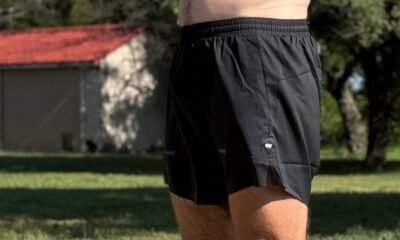

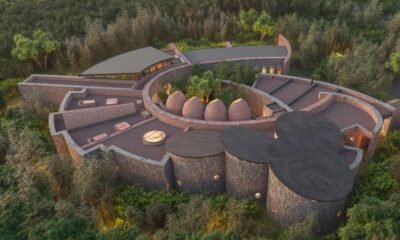

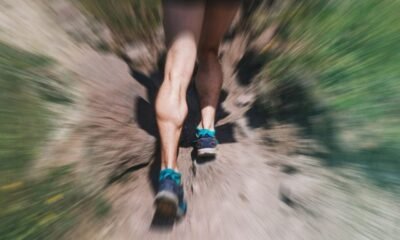







You must be logged in to post a comment Login